calsfoundation@cals.org
Hamburg (Ashley County)
County Seat
| Latitude and Longitude: | 33º13’41″N 091º47’51″W |
| Elevation: | 174 feet |
| Area: | 3.44 square miles (2020 Census) |
| Population: | 2,536 (2020 Census) |
| Incorporation Date: | December 14, 1854 |
Historical Population as per the U.S. Census:
|
1810 |
1820 |
1830 |
1840 |
1850 |
1860 |
1870 |
1880 |
1890 |
1900 |
|
– |
– |
– |
– |
– |
– |
– |
747 |
655 |
1,260 |
|
1910 |
1920 |
1930 |
1940 |
1950 |
1960 |
1970 |
1980 |
1990 |
2000 |
|
1,787 |
1,538 |
1,517 |
1,939 |
2,655 |
2,904 |
3,102 |
3,394 |
3,098 |
3,039 |
|
2010 |
2020 |
|
|
|
|
|
|
|
|
|
2,857 |
2,536 |
As a small town, Hamburg is typical in the economic challenges facing it but is atypical in that it has become the educational center for most of Ashley County’s geographic area, as well as small parts of Chicot and Drew counties.
Early Statehood through Reconstruction
Hamburg was laid out in October 1849, two months after Ashley County was formed from part of Drew County in the area earlier known as the Great Wilderness. With the town’s designation as the county seat, two of the first public buildings were the courthouse and the county jail, erected in 1850. The site was chosen at least in part because the legislation organizing the county required that the county seat be within five miles of the county’s geographic center.
During the Civil War, Hamburg helped provide troops to the Confederacy, with several companies of the Third Arkansas Infantry that fought with the Army of Northern Virginia, commanded by Hamburg lawyer Van H. Manning, organized in or around the town. The town escaped military action during the war, though state militia briefly occupied it during Reconstruction under Governor Powell Clayton’s proclamation that several counties, including Ashley, were in rebellion. Though there were instances of violence throughout Reconstruction, the proclamation was most likely in opposition to the conservatives who remained in control of the county and its government.
Two African-American men were lynched seven years apart (in 1877 and 1884) for the same crime, allegedly murdering a white thirteen-year-old girl. In 1891, an African-American man named Henry Jones was lynched for having allegedly murdered his wife.
In the years after organization, the town’s population increased from 747 in 1880 to 1,260 in 1900.
Early Twentieth Century through Faubus Era
Because it is near the county’s geographic center, Hamburg in some ways is pulled in two economic directions. Immediately east and west are prairie regions dedicated to rice and soybean culture, and a dozen miles east of Hamburg is the Mississippi Delta, where cotton and soybeans dominate the economy. On the north and the south, timber culture reigns; many people in Hamburg work with the Georgia-Pacific paper and plywood mills in Crossett (Ashley County) or in supporting industries. The city’s economic base is thus divided among agriculture and forestry.
Agriculture continued as the dominant force in the economy through the early 1900s, though lumber production became increasingly important in later years. After the Depression, the city underwent major social and economic shifts. Many small farmers gave up their attempts to subsist on their land and left the region or went to work in sawmills or paper mills.
After World War II, continued pressures on small farmers led to increased consolidations of agricultural enterprises, with the small family farms replaced by larger, more efficient units.
The civil rights movement came to Hamburg with the peaceful, gradual integration of the public school system, beginning with the fall school term in 1965.
Modern Era
With the decline of the Delta towns, Hamburg is not only the seat of county government and education but is where many Delta people shop for groceries and other essentials.
Before the North American Free Trade Agreement (NAFTA), Hamburg was the home of two large garment factories and a smaller one. Since the approval of that agreement, the two larger factories have closed, with officials of one of the companies stating that they planned to move their production work to Mexico. A hardwood flooring mill remains in operation, and the town is home to two trucking companies and a regional insurance company. Hamburg is also the home of one bank, and two other banks have branches there.
Severe weather has played a part in the town as it exists in the new century. On October 26, 1941, a tornado swept through Hamburg, killing seventeen people and leveling twenty-five homes. On April 8 and 11, 1979, the town again was hit by tornadoes. Though the storms did not kill anyone, the American Red Cross estimated that 450 people lost their homes.
In the twenty-first century, the downtown square remains surrounded by retail businesses and professional offices, though the courthouse that occupied the center of the town square for more than a century is now a block away. A gazebo is now in the center of the square. A new county jail, under construction with a projected completion date of May 2006, is at the western city limits.
In the last half of the twentieth century, the town showed slow population growth, reaching a peak of 3,394 in the 1980 census before losing population to 3,039 in the 2000 census and 2,857 in the 2010 census. Not only have the population numbers changed, but the composition has changed. The 1990 census showed Hamburg with only twenty residents of Hispanic origin. Ten years later, that number was 199; ten years after that, the number was 389. The white population, at 2,107 in 1990, was 1,833 in 2000 and 1,664 in 2010, while the African-American population increased from 979 in 1990 to 1,022 ten years later—but fell to 859 in 2010.
Education
The first formal educational facility in Hamburg was the Bolling Academy, a private school for young ladies, which operated from about 1860 to about 1875. Though details about its origin are sparse, a local newspaper reported in 1889 that the history class of Hamburg High School, operated by the Hamburg High School Association, had eighteen students enrolled in that class alone; five faculty members were enumerated in a later article.
In the twenty-first century, Hamburg serves as the educational locale for much of the county. Consolidation with the Portland, Wilmot, Parkdale, and Fountain Hill school districts resulted in junior high and high school students’s traveling to Hamburg for classes. Parkdale’s elementary school is closed, and the local board approved the transportation of Fountain Hill’s elementary students to Hamburg beginning with the 2006–2007 school year. Local school officials plan to open a cooperative alternative school on the Fountain Hill campus to house programs from other area districts as well as Hamburg.
Attractions
The downtown square, with its gazebo, functions as the center of activities for the Hamburg Area Chamber of Commerce’s Armadillo Festival, held the first weekend in May since 1970. The festival features children’s activities and entertainment for young people and adults. The square also serves as a center for a program to mark the beginning of the Christmas season, and the holiday lights glow from Thanksgiving until the first of the new year.
Though many of the historic buildings have disappeared, the town has several structures on the National Register of Historic Places. Among them are the former Hamburg Presbyterian Church, built in 1871; the Hamburg First United Methodist Church, constructed in 1910; the Watson House, now the Ashley County Museum, built in 1918; the Watson-Sawyer House, built in 1870; and the W. R. Bunkley House, built in 1903.
Famous Residents
Among Hamburg’s prominent former residents are Colonel Van H. Manning, who helped organize and commanded the Third Arkansas Infantry (CSA); William F. McCombs, President Woodrow Wilson’s campaign manager in 1912, chairman of the Democratic National Committee from 1912 to 1916, and president of the American Bar Association; writer Charles “Buddy” Portis, the author of such novels as True Grit, Norwood, and The Dog of the South; essayist Pat Hoy, winner of the 2003 Fellowship of Southern Writers Award for Nonfiction and author of Instinct for Survival and Reading and Writing Essays; and professional basketball standout Scottie Pippen.
For additional information:
“Ashley County History.” Ashley County Ledger. http://www.ashleycountyledger.com/ (accessed July 14, 2023).
Etheridge, Y. W. History of Ashley County. Van Buren, AR: Press Argus, 1959.
David Moyers
Ashley County Ledger
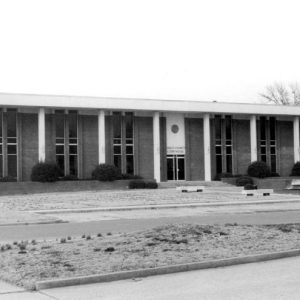 Ashley County Courthouse
Ashley County Courthouse 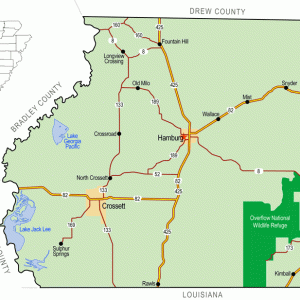 Ashley County Map
Ashley County Map 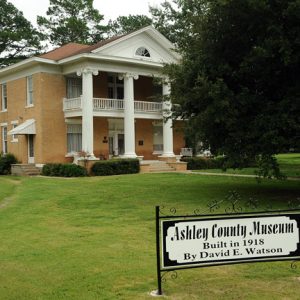 Ashley County Museum
Ashley County Museum 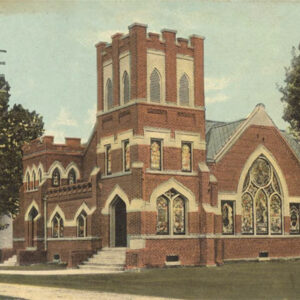 Hamburg Church
Hamburg Church  Hamburg School
Hamburg School 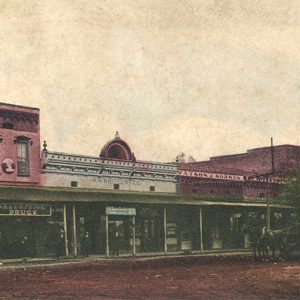 Hamburg Square
Hamburg Square 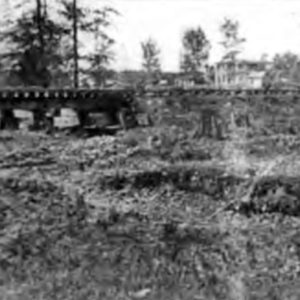 Malaria Control in Hamburg
Malaria Control in Hamburg  Van H. Manning
Van H. Manning  McCombs Hotel
McCombs Hotel 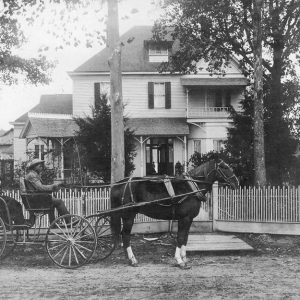 William F. McCombs
William F. McCombs  Scottie Pippen
Scottie Pippen 




Comments
No comments on this entry yet.